Demonstrating impact in your tenure dossier
Tools to attest to influence.

Question:
My tenure dossier is due July 1, and I already know that I’m not going to wow my reviewers with metrics related to my journal publications. I think I’ve done enough to meet the standards outlined in my faculty agreement, but I’m anticipating that it’ll be hard for me to show that in my research-intensive institution (even though they have produced some language that sounds like DORA). What advice for you have for those of us applying for tenure but not interested in demonstrating ‘impact’ through h-index or JIF?
– Anonymous, Labour Studies
Answer:
As you may already know, dear letter-writer, the San Francisco Declaration on Research Assessment (DORA) states that institutions should “consider a broad range of impact measures including qualitative indicators of research impact, such as influence on policy and practice,” and that individual researchers should “use a range of article metrics and indicators” when your work is being assessed (DORA, n.d.).
But what are these impact measures, article metrics and indicators?
Back in 2021, I shared three options, but in the ever-changing landscape of research assessment, it’s time to explore some new possibilities. To learn more about the approaches available to you when you go up for promotion and tenure, I spoke with Dr. Max Liboiron, professor of geography at Memorial University of Newfoundland and Labrador, and with Dr. Kyle Demes, the chief operating officer at the not-for-profit OurResearch. Some of their favourite strategies for demonstrating the influence and impact of your research include:
- Tracing your impact on national and international policy
Researchers whose work may be of interest to policymakers should look themselves up in Sage Policy Profiles to identify where their work has been cited in policy documents. Once you enter your name and ORCiD number, the website shows you recent policy documents in which your work has been cited and maps the prevalence of those citations globally. For researchers who need to demonstrate the international influence of their work, this tool can be an asset.
If you know you’ve been influential outside of academia, but Sage Policy Profiles isn’t yielding results, then Deakin University’s excellent Research Metrics Toolkit — and specifically its suggested metrics for measuring relevance — may help you to figure out how to quantify your ability to shape professional practices, policy public, industry standards or educational curricula.
- Demonstrating the reach of your diverse outputs
OpenAlex is an open-access bibliographic database that provides statistics at the level of the researcher and the output, and includes in its ever-growing corpus journal articles, datasets, reports, standards, reference entries, editorials, and — increasingly — books and book chapters, which have historically been excluded from citation counts.
If you share open data, OpenAlex will help you to trace its use in subsequent studies; if you work on populations in the Global South, you can see whether researchers in the Global South are citing your work; if you publish in French, or are cited in French-language publications, you’re likely to see those publications represented in OpenAlex’s corpus, whereas you might not find them via another platform.
“We’ve known for decades that journals are not the only type of research output, but people have focused on articles for practical reasons,” Dr. Demes told me. OpenAlex is striving “to be as inclusive as possible, to make research information discoverable, accessible, appropriately linked, so that it can be drawn on and used”— including by telling a more complete story of the resonance of your work in subsequent publications.
- Putting publication metrics in context
At some institutions, you just have to include metrics related to publications. If you’re told — or if you have good reason to believe — that your reviewers will look up your publication metrics whether or not you include them, then I suggest including them and providing substantial context.
For example, if you think you need to include your h-index (despite its well-documented flaws), see if there are any published benchmarking studies that show the average citation count of early- and mid-career faculty in your discipline. Might you argue that, although still an assistant professor, you already have an h-index that falls within the average range of an associate professor in your field?
If no such benchmarking publication exists, you might consider showing the Field Weighted Citation Impact of some of your most significant publications, to show that your work is cited at a higher rate than similar publications: a FWCI score of 1.00 suggests that your work is being cited at a rate identical to similar publications, while a FWCI score of 10.00 says your work is being cited 10 times as often as other similar works. Because FWCI hasn’t yet gained the same traction as h-index, however, your reviewers may not be familiar with it, and so may be skeptical: researchers in New Zealand found “a mistrust around the complicated calculation of” the FWIC, noting that, despite their interviewees’ awareness of the limitations of the h-index, “they would be likely to still use h-index over other metrics” (Chivers et al., 2023).
While any number of free and for-pay tools can show you citation metrics — Scopus, Google Scholar, SciVal — I’m personally most likely to turn to OpenAlex, and not just because I like that they’re aligned with, and indeed advancing, the open science movement. I also like that OpenAlex is providing FWCI based on the content in your individual article, rather than on the subject area of the journal. “The journal in which you publish does not necessarily equate to the quality of your work,” Dr. Demes reminded me — which is why I’m a fan of OpenAlex’s approach.
- Showing growth over time
While most of the above metrics give a static picture of your work at the time you compile your dossier, Dr. Liboiron prefers visualizations that allow you to compare your present work to your prior work. “Exploring your own research trajectory through trends over time is really powerful,” Dr. Liboiron told me. For example, in their tenure dossier, in addition to line graphs demonstrating increases in publications and grant dollars, Dr. Liboiron also visually represented media coverage of their research:
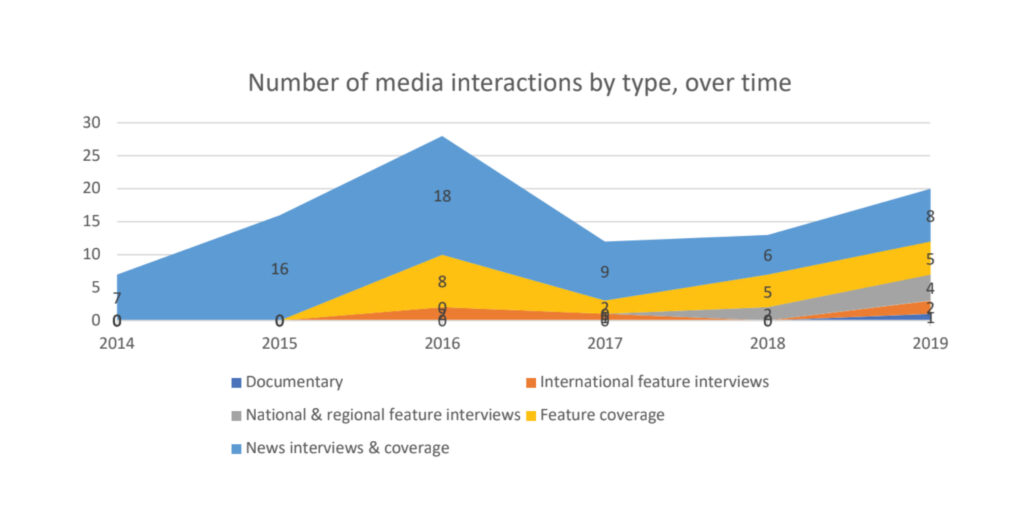
In their service section, they had two graphs showing their increasing responsibilities in service roles, and the increasing scale of their service contributions:
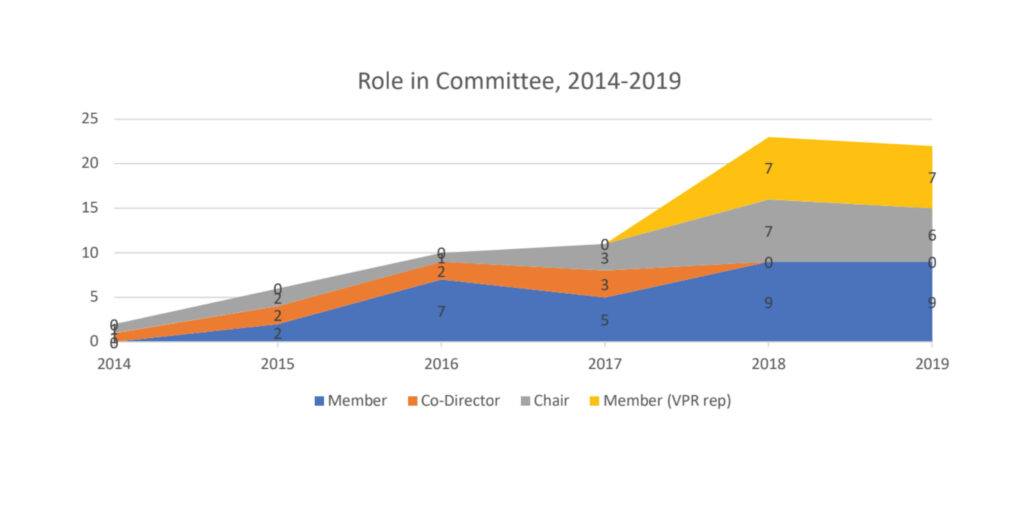
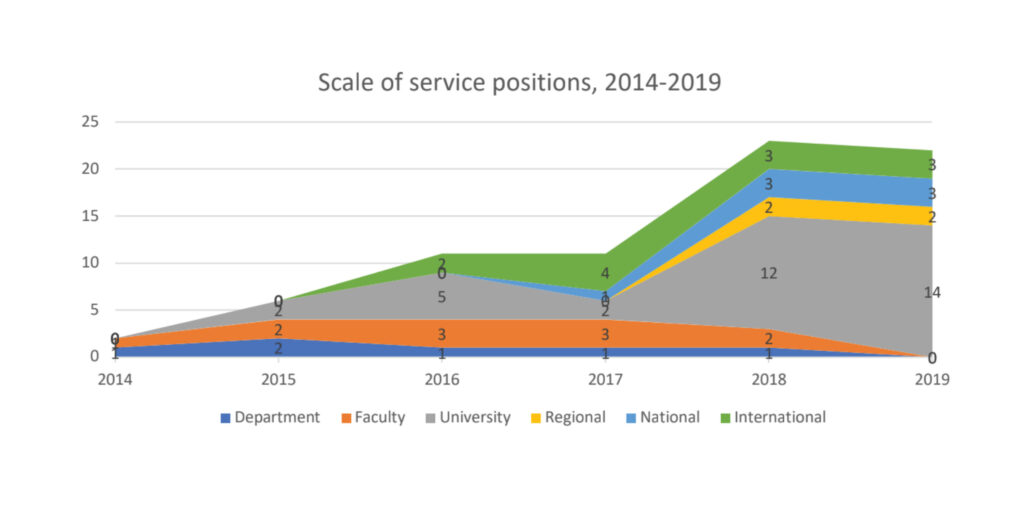
Alongside these charts, Dr. Liboiron provided contextual details that interpret this data, arguing that the increased media recognition attests to the growing national and international recognition of the significance of their work, while the increased service responsibilities attest to the growing recognition of their leadership on- and off-campus. “I described these graphs as pointing to the maturity of my work,” Dr. Liboiron told me.
In short: they’re showing their readers how to interpret the data provided in their dossier.
Numbers only matter in context
In providing you with these tools and strategies for quantifying your case for promotion and tenure, my intention is to show you some of the numbers you might want to include with qualitative descriptions of why your work matters. Metrics aren’t self-evident: you need to show your reader how to understand them in the context of your discipline, your institution — even your individual goals and priorities as a researcher.
While the specific criteria for promotion and tenure vary from one institution to another, in general, your goal in your dossier will be to show to your reviewers your productivity and ability to bring about changes in the world — whether evident in communities, in policy, in curricula, or in scholarly conversations. By identifying alternative measures of impact, and by providing your reader with a narrative that interprets these measures, you’ll produce a more complete, accurate and nuanced picture of your pre-tenure work.
Plan ahead to advance your writing practice
This spring, Letitia is offering an eight-week facilitated section of “Becoming a Better Editor of Your Own Work.” The course runs from May 4th to June 28th, 2025. Learn more here.
Featured Jobs
- Canada Excellence Research Chair in Computational Social Science, AI, and Democracy (Associate or Full Professor)McGill University
- Business – Lecturer or Assistant Professor, 2-year term (Strategic Management) McMaster University
- Veterinary Medicine - Faculty Position (Large Animal Internal Medicine) University of Saskatchewan
- Psychology - Assistant Professor (Speech-Language Pathology)University of Victoria







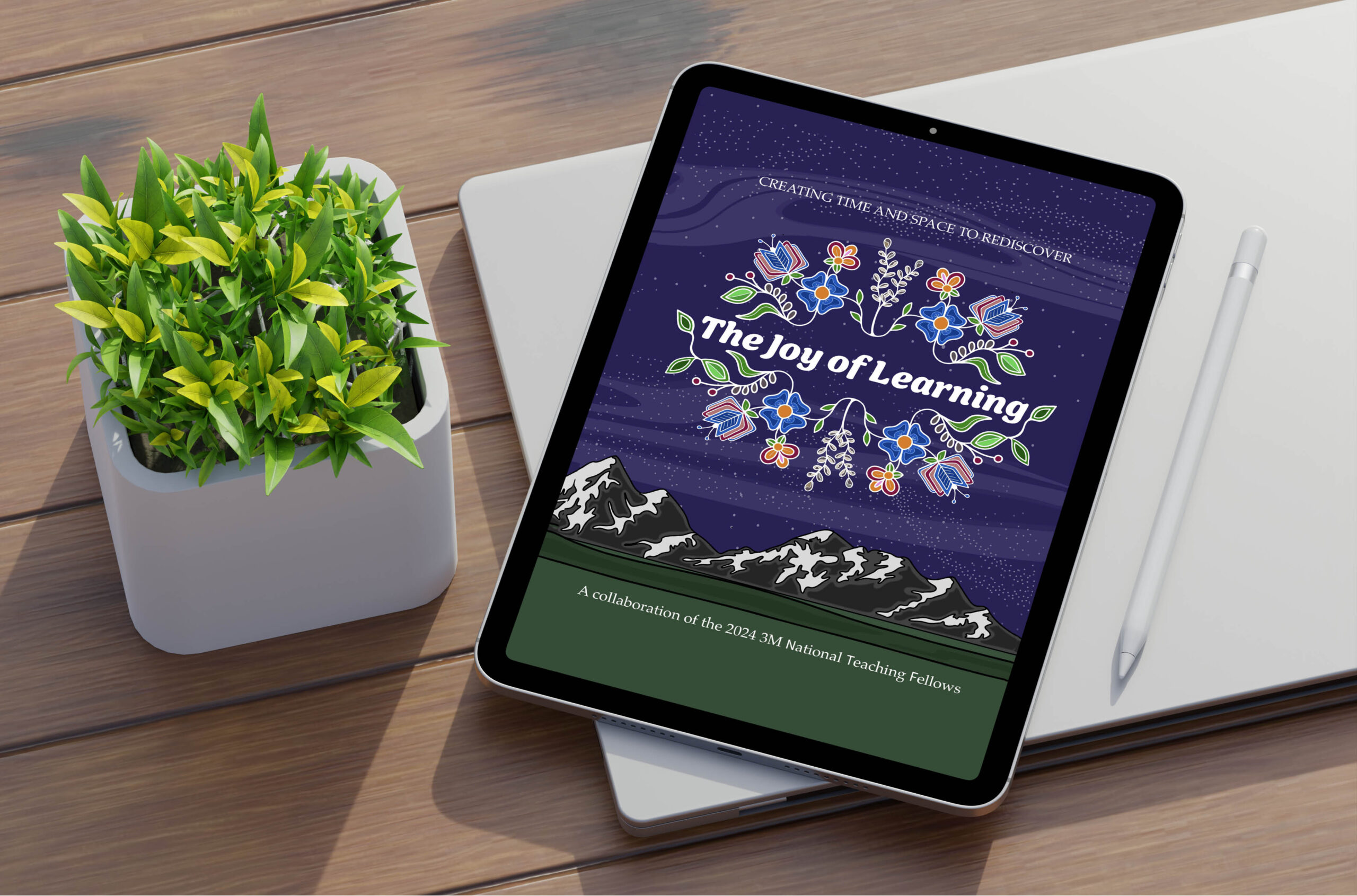


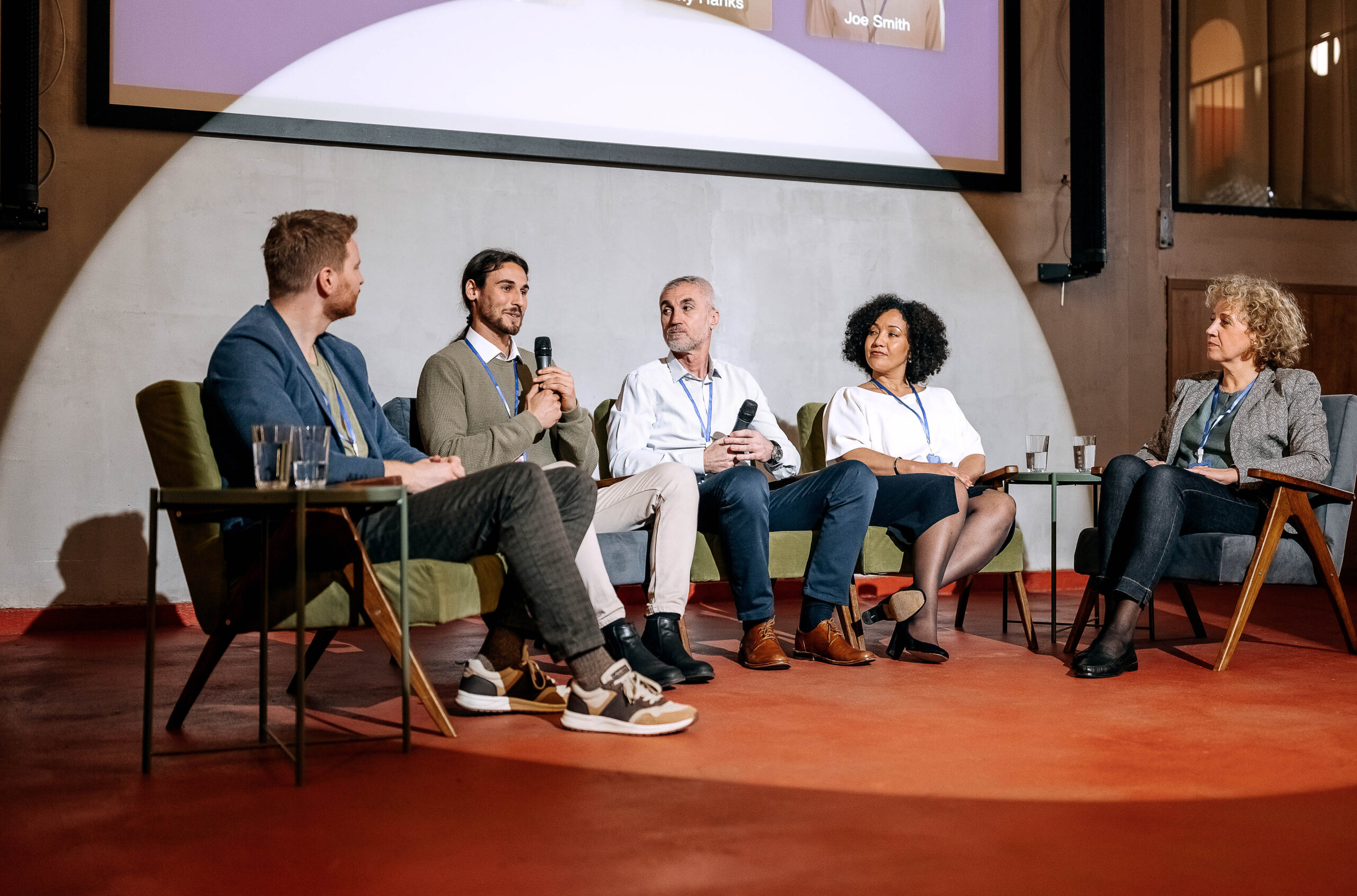



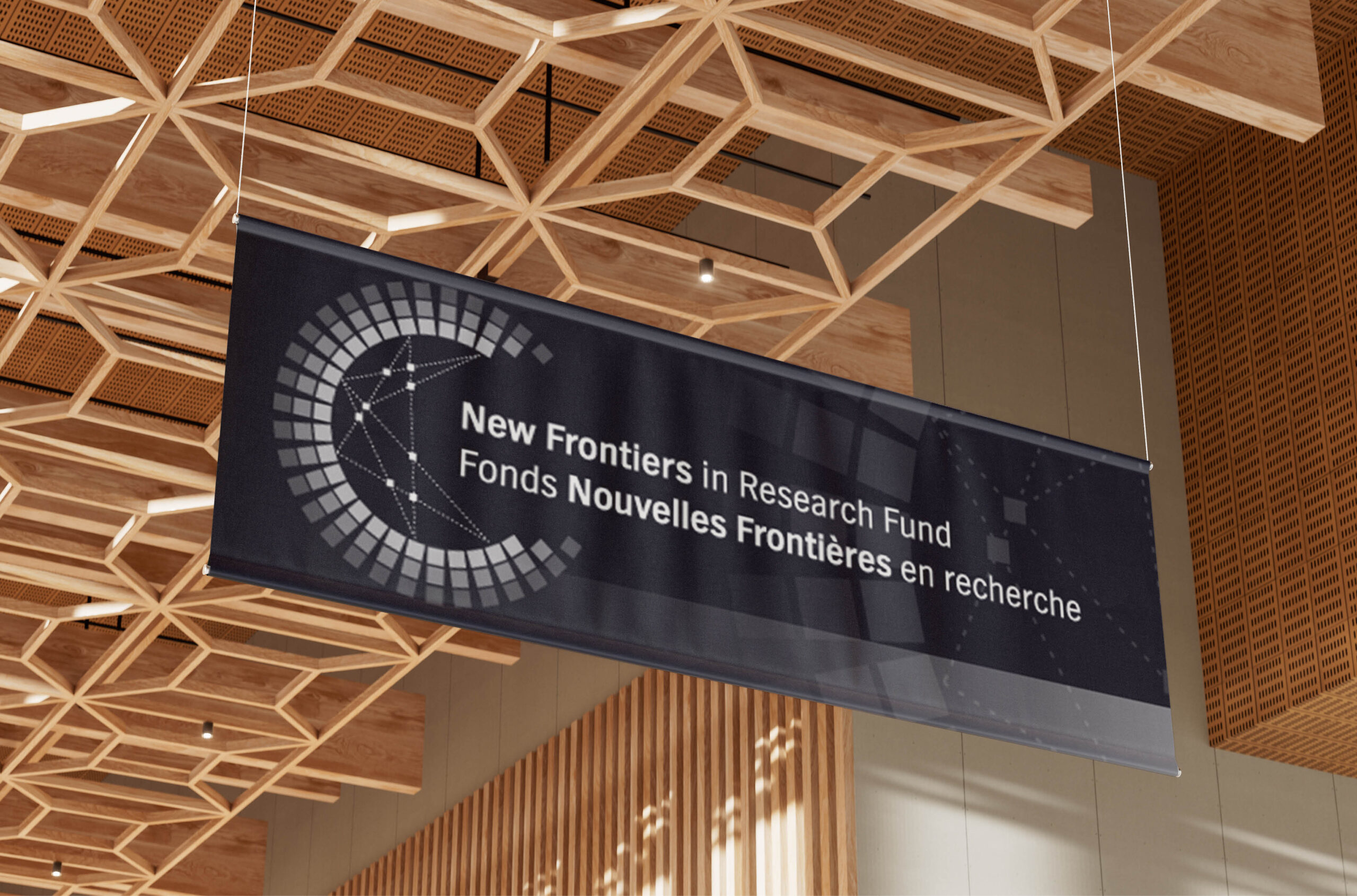

Post a comment
University Affairs moderates all comments according to the following guidelines. If approved, comments generally appear within one business day. We may republish particularly insightful remarks in our print edition or elsewhere.